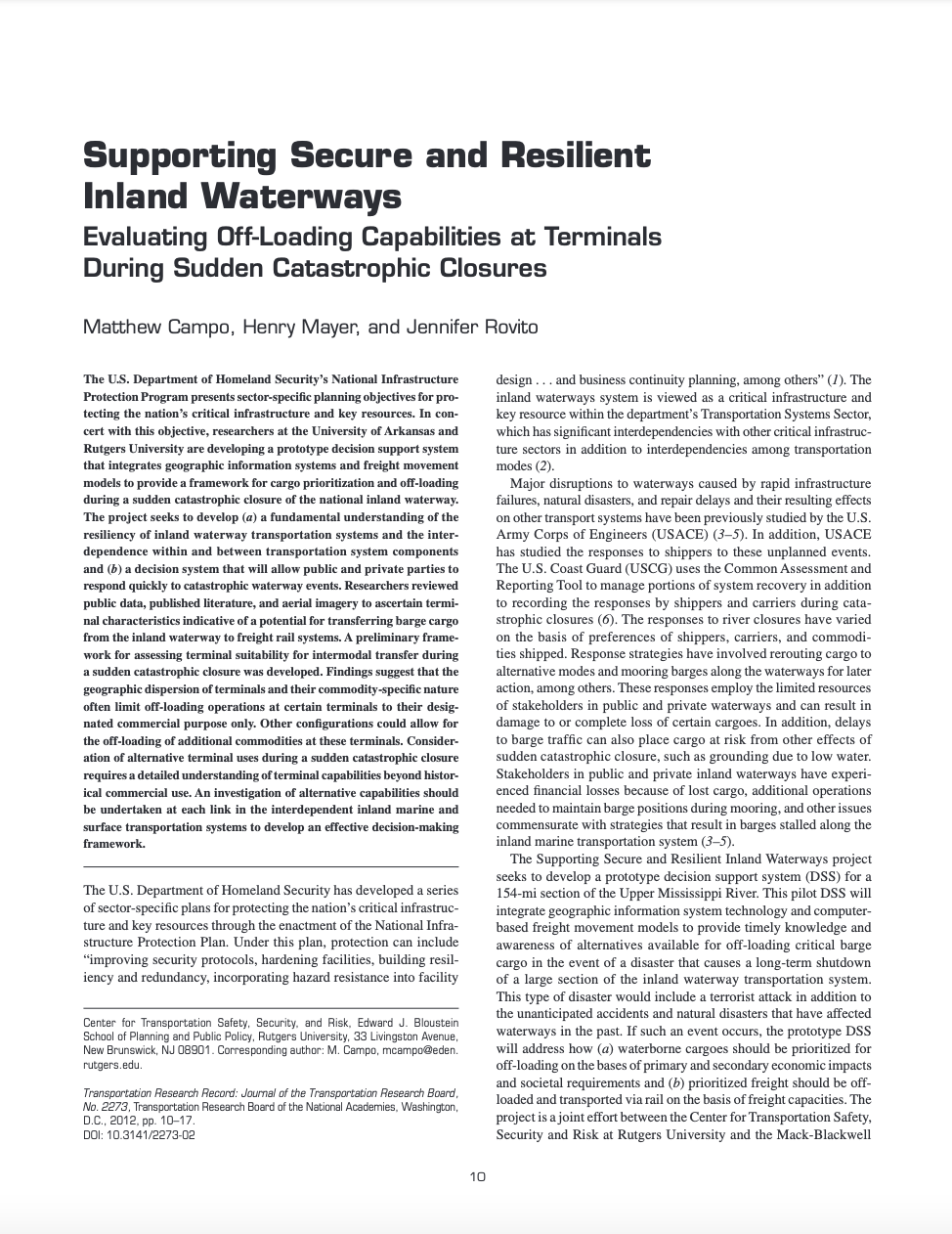The U.S. Department of Homeland Security’s National Infrastructure Protection Program presents sector-specific planning objectives for protecting the nation’s critical infrastructure and key resources. In concert with this objective, researchers at the University of Arkansas and Rutgers University are developing a prototype decision support system that integrates geographic information systems and freight movement models to provide a framework for cargo prioritization and off-loading during a sudden catastrophic closure of the national inland waterway. The project seeks to develop (a) a fundamental understanding of the resiliency of inland waterway transportation systems and the interdependence within and between transportation system components and (b) a decision system that will allow public and private parties to respond quickly to catastrophic waterway events. Researchers reviewed public data, published literature, and aerial imagery to ascertain terminal characteristics indicative of a potential for transferring barge cargo from the inland waterway to freight rail systems. A preliminary framework for assessing terminal suitability for intermodal transfer during a sudden catastrophic closure was developed. Findings suggest that the geographic dispersion of terminals and their commodity-specific nature often limit off-loading operations at certain terminals to their designated commercial purpose only. Other configurations could allow for the off-loading of additional commodities at these terminals. Consideration of alternative terminal uses during a sudden catastrophic closure requires a detailed understanding of terminal capabilities beyond historical commercial use. An investigation of alternative capabilities should be undertaken at each link in the interdependent inland marine and surface transportation systems to develop an effective decision-making framework.
Supporting Secure and Resilient Inland Waterways: A Decision Framework for Evaluating Offloading Capabilities at Terminals during Sudden Catastrophic Closures
Citation:
Campo, M., Mayer, H., and Rovito, J., 2012. Supporting Secure and Resilient Inland Waterways: A Decision Framework for Evaluating Offloading Capabilities at Terminals during Sudden Catastrophic Closures. Transportation Research Record. 2273, pp. 10-17.
